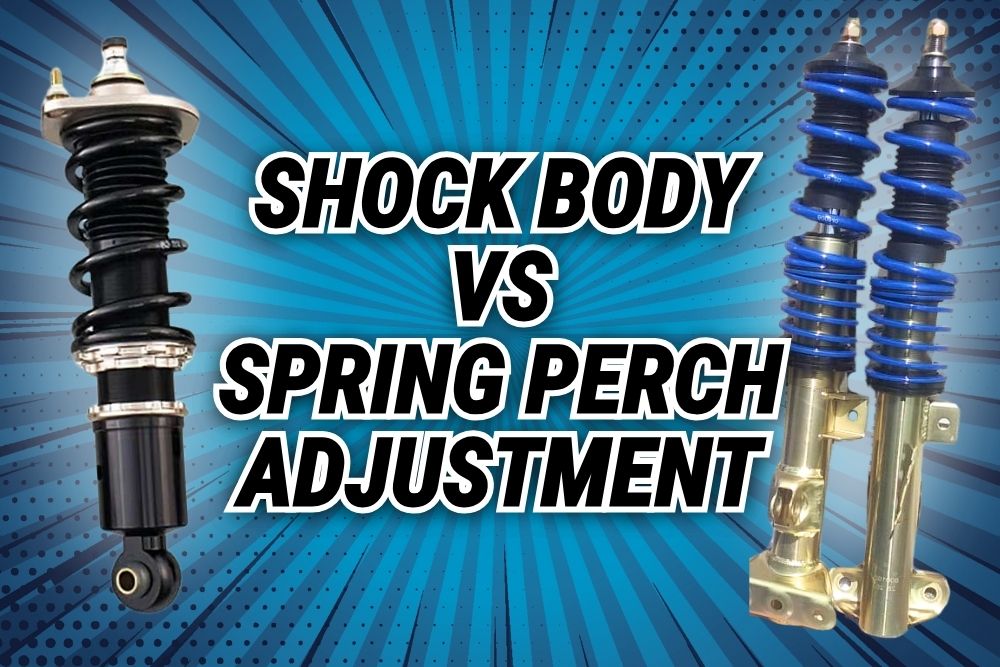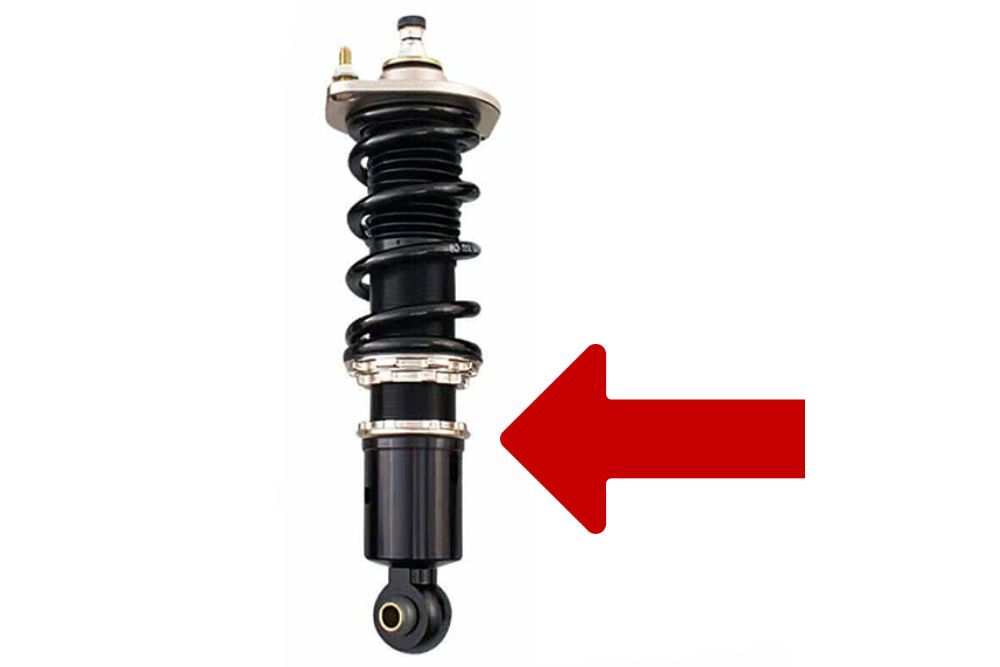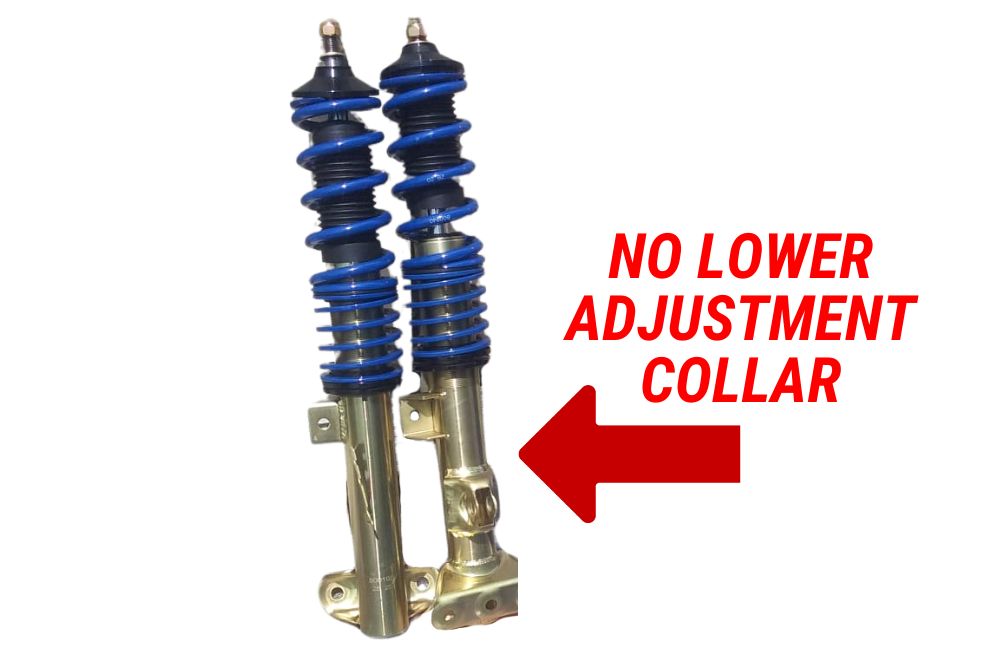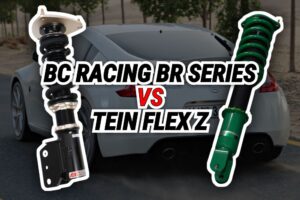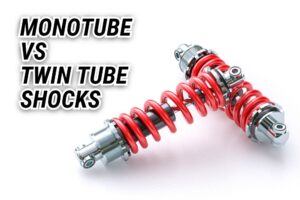The Pros and Cons of Shock Body Vs Spring Perch Coilover Height Adjustment
When it comes to coilovers, there are two different configurations they come in for adjusting ride height: spring perch height adjustment, and shock body height adjustment.
The difference between these two is crucial for how your coilovers will perform.
In this blog post, we will cover exactly what these two configurations are and which one is better for your car.
Shock Body Height Adjustment
Shock body height adjustment is when the coilover is designed so that the ride height is adjusted by winding the entire shock body up and down.
As you adjust the ride height, the entire coilover (damper and spring together) move up and down.
The way this works is that the damper is threaded all the way to the bottom, and screws into the shock body mount at the bottom. As you adjust the height, the whole damper assembly along with the spring, spring perches and top mounts winds up or down.
This is a very common type of configuration, and most coilovers on the market including BC Racing, Fortune Auto and others have this type of height adjustment.
The easiest way to tell if a coilover has shock body height adjustment is to look for a third adjustment collar at the bottom of the adjustment threads:
If it doesn’t, then height adjustment is done by the spring perch.
Benefits of Shock Body Adjustment
The biggest benefit of this configuration is the fact that no matter how much you lower the car, you do not reduce the damper’s travel.
This is because the damper moves down with the spring, so the spring is still in the same position relative to the damper.
This prevents bottoming out at low ride heights, and allows the damper to operate in its ideal range regardless of what height you set.
It also means that you don’t mess with the spring preload or compression when adjusting the ride height, since you don’t actually move the spring in relation to the damper.
This also allows you to set the spring load how you want it, and adjust the ride height independently without affecting the spring preload.
Negatives of Shock Body Adjustment
One negative of this type of design is that as you lower the ride height, you end up with less stroke, since the overall length of the damper is now shorter.
In cases where there are a lot of bumps (rally, drifting, bumpier tracks), this can cause you to have less grip, since your tyres will be in contact with the road for less time.
Realistically, this won’t be a major issue for most people, but it’s something to be aware of.
Another thing to keep in mind is that in some cases it’s also possible to go so low that your your tyres will hit the chassis before the shock bottoms out. This will really only be an issue if you go super low and the dampers weren’t designed for such a low height. It could also be corrected for with longer bump stops.
Spring Perch Height Adjustment
Spring perch height adjustment, on the other hand, is done by adjusting where the spring perch sits on the damper to lower the spring in relation to the damper.
Unlike shock body height adjustment which moves the entire damper assembly up or down, spring perch adjustment only moves the spring and top mount, but the damper stays in place.
These coilovers won’t have a lower adjustment collar, like so:
Advantages of Spring Perch Adjustment
The only real potential advantage to this design that I know of is that the overall length of the shock, fully extended, remains the same regardless of how low you set them.
This means you’ll get more stroke, so in bumpy situations you will have contact with the road more, resulting in more grip.
Negatives of Spring Perch Adjustment
In my opinion, this is the worse design of the two, for numerous reasons.
Dampers are designed to work optimally within a certain range. As you lower the spring, the damper moves out of this range, meaning it cannot perform as designed.
Not only that, but because of this you increase your chances of bottoming out, since the damper must now operate at a much lower range with far less travel.
This is why most coilovers that use this method (such as KW) have a very small recommended lowering range (usually up to an inch).
This also decreases the life of the dampers, since they spend their time operating in a range where they were not designed to, and bottoming out more regularly, which tends to blow the seals.
Also, because you are making adjustments by the spring perch, there is no way to adjust the preload and the ride height separately, you are stuck with whatever happens at the height you set.
So Which One Is Better?
I think my opinion on this is pretty clear by now, but I much prefer the shock body adjustment configuration. I don’t see any benefit at all to having spring perch adjustment (which can’t be corrected or accounted for with a shock body adjustment design), and I don’t know why some coilover companies insist on sticking to this design.
Personally, I go for coilovers which have shock body ride height adjustment.
- BC Racing BR Series VS Tein Flex Z Coilovers - April 15, 2024
- The Pros and Cons of Shock Body Vs Spring Perch Coilover Height Adjustment - April 13, 2024
- Monotube Vs Twin Tube Shocks: The Ultimate Guide - April 11, 2024

